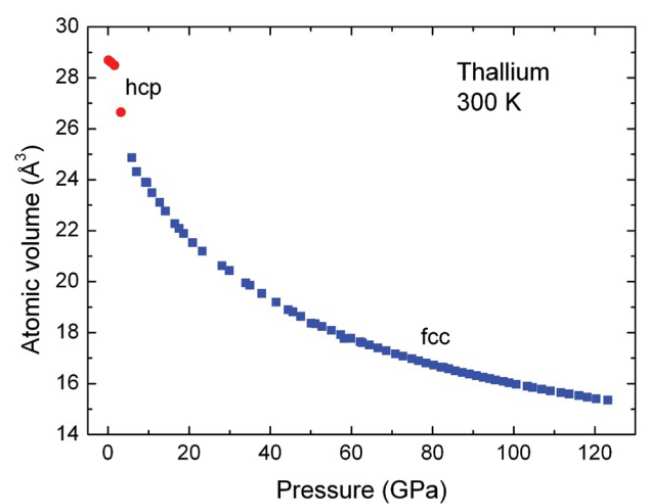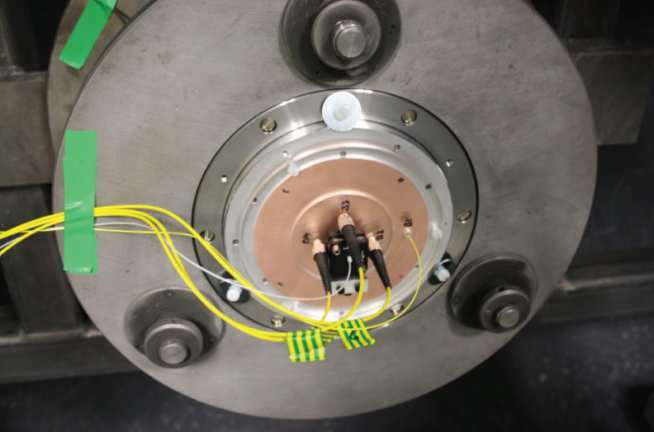Research Collaborations:
- HexMat
- Boron for Carbide B4C
- CBIS
- DTRA
- University of Edinburgh
- University of Pardubice
- Cranfield University
Force blast protection
- William Proud
- Kate Brown (Austin, Texas and Cambridge)
- David Sory (PhD student)
- Thuy-Tien Nguyen (PhD student)
- Andrew Jardine (Cambridge)
The Royal British Legion Centre for Blast Injury Studies (CBIS) at Imperial College London is the result of a £5 million five-year award by the Royal British Legion to promote innovative interdisciplinary research into blast injury causation, treatment, mitigation and prevention. The Centre is a collaboration between military and civilian clinicians, scientists and engineers.
Blast Force Protection, led by Dr William Proud of the ISP, is one of three research themes within the Centre. It builds on work undertaken by Dr Jens Balzer and ISP PhD graduate Dr Chiara Bo and deals with the interaction of the blast wave with the materials and structures around the human body. Much of the work is aimed at ensuring that the stress pulses applied to biological materials are representative of those experienced in the real world environment. In order to achieve this, the team will develop sensors, study the interface between materials, develop physically based models for materials used in protection and measure the load produced by the blast. This theme is being taken forward in collaboration with Dr Andrew Jardine and Dr Kate Brown.
INJURY SIMULATION LABORATORY
CBIS continued its expansion at South Kensington in 2014 with the addition of a specialised facility for underbelly blast simulation in the Department of Bioengineering. The £1.1 million laboratory, fully funded and built by Imperial College, houses AnUBIS - the Anti-Vehicle Underbelly Injury Simulator. AnUBIS is a traumatic injury simulator that replicates the response of a vehicle floor pan that has been hit with an explosive blast. Different occupant postures (seated, standing, brace, neutral and hyper extended) can be tested, highlighting the diversity in the resultant injury severities. The intention is to build upon this facility throughout 2015, allowing tests to be conducted at higher energy levels and with larger experimental specimens.
Under construction. Please check back here in future.
Static high-pressure high-temperature (HP-HT) studies of elemental metals
- Malcolm McMahon
- Simon MacLeod (AWE)
- Graham Stinton
- Keith Munro (PhD student)

Last year we focused our attention on studying the phase properties of a number of elemental metals at HP-HT using diamond anvil cells (DACs) and synchrotron X-ray diffraction. In particular, we further refined our HP-HT capability to collect quality diffraction data utilising a stable platform, shown in figure 31.
MAGNESIUM
We completed our study of the magnesium phase diagram up to a pressure of 211 GPa at 300 K and 105 GPa at 4500 K. Data were collected at the Advanced Photon Source in the US and the Diamond Light Source (DLS) in the UK. For data up to ~ 800 K we used resistive heating together with our vacuum vessels. For temperatures above 1000 K we used laser heating.
CERIUM
We investigated the thermal properties of cerium up to 20 GPa and 800 K at the DLS. Our preliminary results have revealed differences between the observed and predicted solid-solid phase boundaries. This work is currently being prepared for publication.
THALLIUM
Working in collaboration with Professor Daniel Errrandonea (University of Valencia), we are currently engaged in a study of thallium at the Alba synchrotron in Spain. We have collected diffraction patterns up to 8 GPa at 500 K and are the first to compress thallium beyond 100 GPa at 300 K, see figure 32.
Publication
GW Stinton, SG MacLeod, H Cynn, D Errandonea, WJ Evans, J Proctor, Y Meng, MI McMahon Equation of state and high-pressure/high-temperature phase diagram of magnesium Phys Rev B, 86, p. 134105 (2014)

Institute of Energetic Materials
- Jiˇrí Pachman
- Martin Künzel (PhD student)
- Jakub Šelešovský
- Vojtˇech Pelikán
- Robert Matyáš

The Institute of Energetic Materials (IEM) has been part of the Faculty of Chemical Technology at University of Pardubice for over fifty years. Its research and education activities are focused on a variety of multidisciplinary areas including synthesis and characterisation of new energetic materials, computation modelling of explosive effects, detonation physics, forensics, technology of explosive processing and blasting, safety engineering and loss prevention.
The IEM, located in the university’s Technological Pavilion outside of the main campus, runs the only non-military academic test site for explosives in the Czech Republic. Along with the capability for live testing in the open air it further possesses state of the art detonation chambers for testing in enclosed environments. A large variety of detonation parameters of synthesised samples may therefore be easily tested right on the campus site.
The IEM and ISP collaborate actively in a variety of ways including:
- research on concrete under shock and blast loading
- active collaboration on the NTREM seminar series
- participation of ISP students on the IEM short course on explosives
IMPACT AND BLAST LOADING OF CONCRETE
The behaviour of concrete under explosive generated shock loading represents a complex problem. Past research on concrete indicates that the behaviour of this material under low strain rates, where it is usually tested, is markedly different from its behaviour under the extreme strain rates induced by high explosive detonation. A serious interdisciplinary gap needs to be bridged in order to fully understand the options civil engineers have at their disposal to implement blast resistant designs in non-military structures. To achieve this, cooperation of explosive engineers, civil engineers, shock physicists and modellers is vital.

Pardubice’s collaborative project with the ISP aims to gain insight into material behaviour of four different types of concrete including standard C-30/37 construction concrete, metal and plastic fiber concrete and ultrahigh performance concrete. Small, medium and fullscale detonation experiments were carried out on new and artificially aged specimens ranging in size from 10 cm cubes to 6 m slabs. The explosive loading was achieved by either directly placing the explosive charge in contact with the concrete surface or by the blast wave from a near field detonation. To complement the explosive loading trials a series of reverse ballistic plate-impact experiments were undertaken on the ISP large bore gas gun to characterise both the Hugoniot and ro release the isentrope of the concrete materials. The large 100 mm bore of the ISP gas gun is ideally suited to the study of heterogeneous materials, such as full-scale concrete, and promises to improve our overall understanding of this rather challenging problem.
The Dynamic Response Group
- Dr Gareth Appleby-Thomas
- Dr David Wood
- Andrew Roberts
- Dr Malcolm Burns (Visiting Researcher)
- Brianna Fitzmaurice (PhD student)
- Col. Muhammad Akram (PhD student)

A founding spoke partner of the ISP, Cranfield University – via the Dynamic Response Group – takes an active role in shock-based research. The Dynamic Response Group itself has published over 30 peer-reviewed journal articles since the inauguration of the ISP. It is based within the Centre for Defence Engineering at Cranfield University’s Shrivenham campus and consequently has direct access to expertise in the armour and munitions, vehicle mobility and gun barrel design spheres.
The group has supported other members of the ISP and numerous collaborations have ensued between Imperial, University College London and AWE amongst others. Areas explored have ranged from the survivability of seeds and bacteria under shock through the spall response of HCP materials to the development of a ceramic graded areal density impact system. More recently, the group has also moved into provision of specialised courses – with courses entitled ‘Armour System Design’ and ‘Shockwaves and Explosives’ covering three to five days available.
Experimental facilities include five single stage gas guns (with bores of up to 75 mm) and one two-stage system (with an output bore of 7.62 mm); in addition, uniquely in the EU, our location and capabilities allow us to carry out experiments on explosive materials ranging from derivation of equations-of-state through run-to-detonation investigations (POP plots) and safety testing. Finally, our diagnostic capabilities are extensive, with either in-house or on-site expertise in the use of stress/strain gauges, Het-v, flash X-ray and particle-velocity (PV) gauge systems.
The group takes an active role in the support of MSc projects; a typical recent project has involved the use of the flash X-ray system, refurbished over the past year (and previously deployed in collaborative aid of ISP-centred research conducted by David Jones from Imperial) coupled with the explosives capable 50 mm bore (explosives capable) single stage gas gun. This arrangement, shown left, allowed dynamic investigation of the phenomena of dwell (surface defeat) with the aim, via careful engineering of interfaces/free surfaces of optimising ceramic armour performance under scaled long-rod penetrator attack.
Publications:
GJ Appleby-Thomas, DC Wood, A Hammed, JA Leighs On the ballistic response of an aerospace-grade composite panel to non-spheroidised fragment simulants Compos. Struct., 119, 90–98 (2015)
GJ Appleby-Thomas, PJ Hazell, RP Sheldon, C Stennett, A Hameed, JM Wilgeroth The high strain-rate behaviour of selected tissue analogues J. Mech. Behav. of Biomed. Mater. 33(1), 124–135, (2014)
PJ Hazell, GJ Appleby-Thomas, E Wielewski, JP Escobedo The shock and spall response of three industrially important HCP metals: Magnesium, Titanium and Zirconium Phil. Trans. Of the Royal Soc. A: Mathematical, Physical & Engng. Sciences, 372(2023), 20130204, (2014)
PJ Hazell, GJ Appleby-Thomas, S Toone Ballistic compaction of a confined ceramic powder by a non-deforming projectile: Experiments and simulations Mater. & Des., 56, 943–952, (2014)